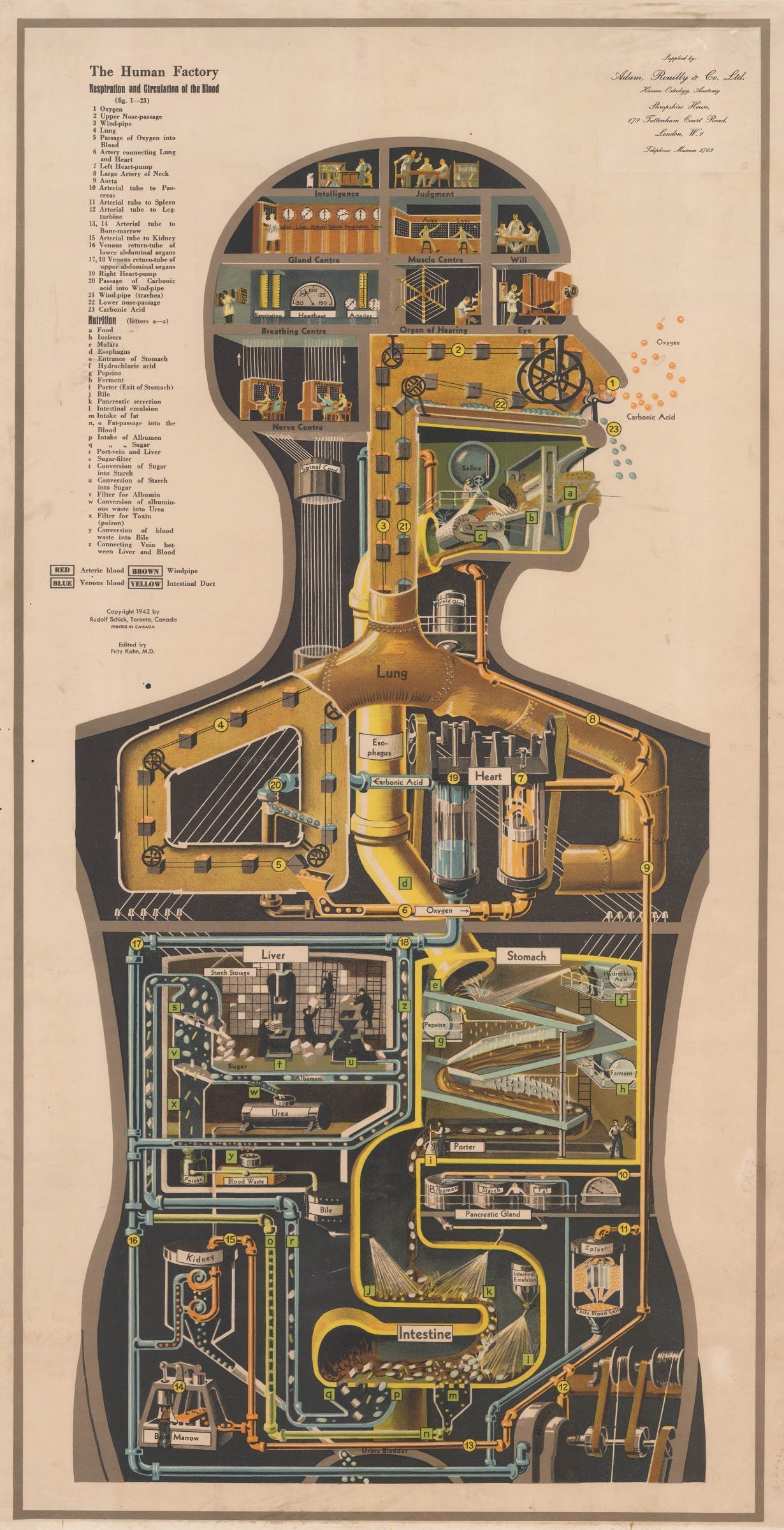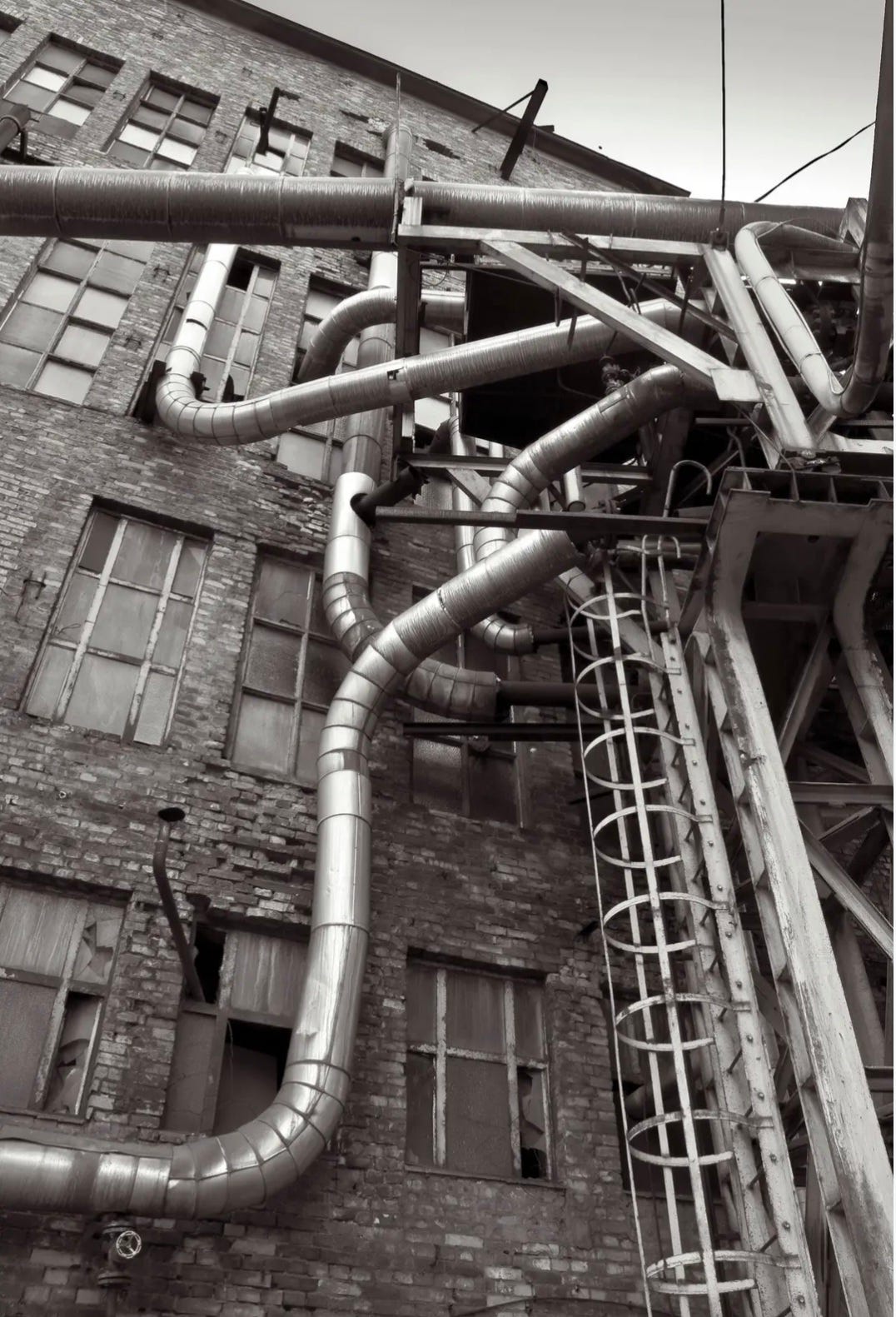Developer at Berghain Klubnacht, 6 October 2024
I went to see Developer last Sunday. It made me think about industrial poetics, of which Antonioni’s 1964 film Red Desert is an example.
In the film’s opening scene, the protagonist Giuliana (played by Monica Vitti) wanders troubled through an outdoor industrial landscape. She’s afraid as she passes the factory walls and flame-topped pylons and vast cooling towers, which all seem to gaze deep inside her. The metal and steel structures become like strange art objects; more, invested with animism, they become alien beings. The human is dwarfed by the mechanical-industrial.
Industrial poetics has been around a while. In the 1920s, Franz Hessel compared a Berlin turbine factory to a cathedral (‘Even before you understand just how the metal monsters down below produce further metal monstrosities, you’re smitten by the mere sight of them’). In 1926, Fritz Kahn imagined the human as an industrial palace. something Kraftwerk reprised in their nostalgic futurism, naming an album The Man Machine and calling their genre industrial folk music. As with indigenous folk musics, which supposedly manifested the essential identity of the people, industrial folk music would show us industrial people to ourselves, alien as we are.
The LA techno artist Developer (Adrian Sandoval) creates a distinctive style of industrial machine funk. Since starting releasing music in 2008, he has produced tracks en masse, lending to the impression of his music as emerging from the gears and conveyor belts and pistons of an industrial production plant. He creates hundreds of tracks a year, leaving lots of them unreleased, and he has pursued his churning, looping, exploding style with admirable obstinacy.
I like his 2012 EP Origins, ‘Tele’, in particular. With its 2/4 conveyer belt loop, its incoherent pitch-down vocal sample, its sustained low pitch breaking periodically into white noise, it feels like a pure expression of club techno, minimal, slow, machinic. In its conflation of a human vocal sample and machinic processes, it suggests a synthesis of the human and the industrial: the factory as a sentient being, the human as an animated cyborg.
Developer’s also responsible for one of the classic recordings from Berghain, a recording of a Klubnacht set he played in 2012. The set is hypnotic and roaring, and, thinking of that dark ex-thermal energy plant space, the distortion matches the corroded walls and darkness. It’s hard not to get swept up in the hypnotic effect, and to feel seen by it. He hadn’t played Berghain in several years, and, following his Oxi date earlier this year for Warp Inferno, this was an anticipated return.
On Sunday, dancing on the podium at the back of the dark main room, it took me a while to get into his set. The groove had to move through me for a while before I started merging with it. He was playing off a laptop with (I think) a hardware drum machine also going into the mixer; the low end was pleasantly rumbling and physical. Following the example of Jeff Mills, Developer tends to play largely his own productions when DJing.
Eventually, over the couple of hours I caught, the experience became ecstatic. At times, as you looked on the pink-lit, blue-lit corroded walls, it felt like you were merging with them. The industrial being was you; you were the music and the industrial building.
Aside from that, there’s not a whole lot to say. The crowd wasn’t too much to my taste on the floor (high techno bro quotient) but around the back podium, the usual characters were there and fun.
Thinking about the set afterwards and how distinctive it was, it made me realise we don’t talk much about style in techno. As in literature, where achieving a distinctive style is the hallmark of distinction (e.g., the styles of Proust, Celine, Beckett, Nabokov, Lispector, McBride, Bernhard, etc.), so in techno, a distinctive style should be considered the same way. Developer is, in that light, right up there.





